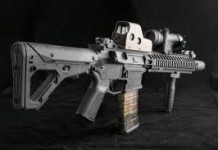Six years after the financial meltdown there is once again talk about market bubbles. The New York Times asks, “Are stocks succumbing to exuberance? Is real estate? We thought we had exorcised these demons. It is therefore with something close to despair that we ask: What is it about risk taking that so eludes our understanding, and our control?
“Part of the problem is that we tend to view financial risk taking as a purely intellectual activity. But this view is incomplete. Risk is more than an intellectual puzzle — it is a profoundly physical experience, and it involves your body. Risk by its very nature threatens to hurt you, so when confronted by it your body and brain, under the influence of the stress response, unite as a single functioning unit. This occurs in athletes and soldiers, and it occurs as well in traders and people investing from home. The state of your body predicts your appetite for financial risk just as it predicts an athlete’s performance.
“If we understand how a person’s body influences risk taking, we can learn how to better manage risk takers. We can also recognize that mistakes governments have made have contributed to excessive risk taking.
“Consider the most important risk manager of them all — the Federal Reserve. Over the past 20 years, the Fed has pioneered a new technique of influencing Wall Street. Where before the Fed shrouded its activities in secrecy, it now informs the street in as clear terms as possible of what it intends to do with short-term interest rates, and when. Janet L. Yellen, the chairwoman of the Fed, declared this new transparency, called forward guidance, a revolution; Ben S. Bernanke, her predecessor, claimed it reduced uncertainty and calmed the markets. But does it really calm the markets? Or has eliminating uncertainty in policy spread complacency among the financial community and actually helped inflate market bubbles? Continue reading “Risky business”





